« Two faces of the same heroine, two immortal masterpieces. Through Judith I (1901) and Judith II (1909), Gustav Klimt explores the fascinating duality of feminine power, oscillating between golden brilliance and dark drama. »
🎨 Introduction: Judith, double icon of Gustav Klimt
At the turn of the 20th century, Gustav Klimt gave birth to two masterpieces that would leave a lasting mark on the history of Art Nouveau: Judith I (1901) and Judith II (1909). Through these two fascinating representations of the same biblical character, Klimt explores the complex duality of feminine power, oscillating between luminous seduction and dark violence.
These works, created at two key moments in his career, perfectly symbolize the artist's stylistic evolution and the deepening of his psychological research. While Judith I embodies golden brilliance, sensual grace, and the triumphant pride of the heroine, Judith II reveals a harsher and tormented facet, marking a turning point towards a more tragic and visceral vision.
In this article, we invite you to discover how Judith I and Judith II rank among Klimt's greatest works, while illustrating the richness of Art Nouveau and the striking modernity of his approach to the feminine.
🖌️ Who is Gustav Klimt?
🎨 A Viennese master at the heart of Art Nouveau
Gustav Klimt (1862–1918) is one of the major figures of European Art Nouveau. Born in Baumgarten, near Vienna, he trained very young in decorative arts before establishing himself as a visionary artist, at the crossroads of painting, symbolism, and luxurious ornamentation.
An avant-garde artist, Klimt is also one of the founders of the Vienna Secession, a movement born in 1897 to defend artistic freedom against academic conventions. His art, recognizable among all, boldly mixes sensuality, nature, antique references, and a deeply decorative aesthetic.
✨ Ornamentation, eroticism, and women: at the heart of his inspiration
In Klimt's universe, women occupy a central place. Whether she is a muse, heroine, or symbol, she embodies both the beauty, strength, and complexity of the human soul. The artist celebrates feminine sensuality through free forms, golden compositions, and intense emotional expression.
His work is characterized by rich ornamentation, the masterful use of gold leaf, floral patterns, and abstract backgrounds that give his canvases a dreamlike and timeless impression.
🏛️ The "golden period": the peak of Klimt's genius
The first decade of the 20th century marks what is called Klimt's "golden period". During this phase, he creates some of his most famous works, including The Kiss (1907–1908), Portrait of Adele Bloch-Bauer I (1907), and of course Judith I.
It is at this time that his style reaches a form of perfection: a unique alliance between sensual realism and ornamental symbolism, where gold becomes a true visual language to enhance the human figure.
Judith I and Judith II are precisely part of this exceptional artistic trajectory, illustrating both Klimt's aesthetic boldness and his deep exploration of the feminine soul.
🕰️ Historical context of the creation of Judith I and Judith II
🌍 Vienna at the end of the 19th century: an artistic and intellectual upheaval
At the end of the 19th century, Vienna is one of the most vibrant cultural capitals in Europe. The city experiences a true creative explosion driven by the arts, music, literature, and the emerging psychoanalysis with Freud. This atmosphere of intellectual renewal fosters the emergence of avant-garde movements, such as the Viennese Secession, of which Gustav Klimt is one of the main founders.
In this climate of questioning academic traditions, artists seek new forms of expression to reflect the deep tensions of their time: modernity, spirituality, the quest for beauty, and exploration of the unconscious.
✨ Klimt's attraction to strong and ambiguous heroines
In this environment, Gustav Klimt is particularly interested in complex female figures, both seductive and dangerous. He sees in them the perfect expression of human duality: between life and death, purity and eroticism, innocence and power.
Her choice to represent Judith, the famous biblical heroine, is no coincidence. Through her, Klimt explores a powerful archetype: that of the free woman, capable of overcoming masculine authority through her beauty and intelligence.
📜 The biblical story of Judith: a symbol of emancipation and power
In the Old Testament, Judith is a courageous widow who saves her besieged people by seducing and then beheading the enemy general, Holopherne. Her act is traditionally seen as a gesture of bravery, blending feminine charm and salvatory violence.
For Klimt, Judith becomes much more than a mere religious heroine. She embodies a allegory of feminine power, capable of overturning the established order while affirming her sensuality.
Through Judith I (1901) and Judith II (1909), Klimt offers two complementary visions of this eternal myth: one golden and triumphant, the other dark and dramatic, thus reflecting the evolution of his own perception of the feminine and power.
🖼️ Visual analysis of Judith I (1901)
👁️ A bold posture and an enchanting gaze
Dans Judith I, Gustav Klimt offre une interprétation saisissante de la célèbre héroïne biblique. Judith y apparaît en buste, légèrement penchée vers l’avant, son visage baigné d'une expression de satisfaction triomphante. Ses yeux mi-clos, son regard langoureux et sa bouche entrouverte traduisent un mélange subtil de puissance, de plaisir et de provocation.

This posture, both majestic and sensual, places Judith in a dominant position: far from being a mere victim or martyr, she is here the mistress of her fate and aware of her irresistible power.
✨ The ornamental richness: the brilliance of gold leaf
The composition of the painting is sublimated by the sumptuous use of gold leaf, emblematic of Klimt's "golden period". The resplendent background, dotted with sophisticated decorative patterns, envelops Judith's figure in an almost divine aura.
The shiny texture of gold contrasts with the delicacy of bare skin, accentuating the character's sensuality while creating a mystical and timeless atmosphere. Klimt also incorporates stylized geometric and floral elements, reinforcing the effect of abstraction and visual wonder.
🌹 The triumphant sensuality of an eroticized heroine
In this work, Klimt does not merely represent a heroic act: he openly celebrates female sensuality. Judith's partially nude body, adorned with delicate jewelry, immediately captures attention. The contrast between the softness of the forms and the underlying violence of her gesture enhances the dramatic tension of the painting.
Judith I thus stands as a bold manifesto: that of a powerful, erotic, and liberated woman, fully in control of her image and her power.
Through this unique vision, Klimt transforms a traditional biblical scene into a true modern icon of female emancipation.
🖼️ Visual analysis of Judith II (1909)
🌑 A radical change of tone: a darker and wilder Judith
Avec Judith II, Gustav Klimt propose une vision bien différente de celle dévoilée dans Judith I. Ici, la figure féminine est nettement plus âpre, presque inquiétante. La posture est plus rigide, le regard plus dur, les traits du visage tendus par une intensité dramatique.
Judith is no longer just a triumphant seductress: she becomes a tragic and wild figure, expressing both victory, pain, and contained violence. This transformation reflects Klimt's evolution towards a darker and more psychological approach to his subjects.
🎨 Angular strokes, a dark background, muted colors
Visually, Judith II marks a turning point in Klimt's style. The rounded and golden shapes of Judith I give way to more angular and sharp lines. The background, once bathed in golden light, is here a deep black, creating a brutal contrast with the almost sickly pallor of Judith's face and body.
The color palette is deliberately more subdued: dominated by dark, ochre, and earthy tones, it reinforces the feeling of gravity and dramatic tension. The decapitated head of Holofernes, much more visible than in Judith I, accentuates the brutality of the scene.
🔥 An intensification of violence and ambivalence
Through Judith II, Klimt pushes even further the exploration of latent violence and ambivalence of the character. Judith is both the agent of salvation for her people and the embodiment of an unrelenting destructive force.
Sensuality has not disappeared, but it is now mixed with a manifest cruelty, with a raw energy that disturbs and fascinates. This work conveys a much more troubled vision of feminine power, echoing the anxieties and upheavals of Viennese society of the time.
Judith II thus presents itself as the dark mirror of Judith I, revealing the other face of power and female emancipation according to Klimt.
🌟 Symbolism and interpretations
👑 Judith: heroine, seductress or femme fatale?
In the biblical tradition, Judith is celebrated as a virtuous heroine, a symbol of courage and faith. However, under the brush of Gustav Klimt, she becomes much more than a moral figure: she embodies feminine complexity, oscillating between salvific virtue and irresistible seduction.
Klimt transforms Judith into an ambiguous icon, both fascinating and disturbing. She is no longer just the savior of her people; she also becomes a woman aware of her erotic power and the danger she represents. This modern reading makes Judith a prefiguration of contemporary archetypes of the femme fatale.
✨ Judith I and Judith II: two symbolic visions
The two paintings reveal very different aspects of the same myth:
-
Judith I (1901) celebrates the golden seduction. Judith is resplendent, sovereign, enveloped in a golden light that magnifies her beauty and power. She embodies triumphant eroticism and controlled victory.
-
Judith II (1909), on the contrary, plunges into tragedy and brutality. Here, Judith appears wilder, her face distorted by the intensity of the act she has just committed. The golden glamour has disappeared, giving way to an exacerbated dramatic tension.
This opposition highlights Klimt's artistic evolution but also his desire to explore all facets of the human soul through a single figure.
🌗 A reflection on the duality of human nature
Through Judith I and Judith II, Klimt questions the deep duality of human beings: the coexistence of light and shadow, love and destruction, beauty and terror.
Judith is neither entirely virtuous nor entirely perverse; she embodies this universal inner tension. In this, Klimt transcends simple biblical illustration to offer a timeless meditation on power, sexuality, and the contradictory nature of the human soul.
These two paintings invite the viewer to contemplate not only the mythical figure of Judith but also her own inner ambivalences.
🏛️ The place of Judith I and Judith II in Klimt's work
🎨 Two essential milestones in Klimt's stylistic evolution
Judith I (1901) and Judith II (1909) occupy a central place in the artistic journey of Gustav Klimt. Through these two works, the artist asserts his creative maturity and explores new stylistic paths.
Judith I represents the peak of her golden period, marked by the sumptuous use of gold leaf, sophisticated ornamentation, and elegant sensuality. It is an era where Klimt combines aesthetic refinement with subtle symbolism, bringing decorative painting to its summit.
With Judith II, Klimt initiates a transition towards a more dramatic and psychological expression. The lines become more angular, the colors darker, the emotions more violent. This evolution foreshadows the more tormented works of the end of his career, where beauty coexists with anguish.
🔗 Links to other masterpieces: The Kiss, Danaé, Salomé
Judith I and Judith II converse with several other major canvases by Klimt:
-
Le Baiser (1907–1908) partage avec Judith I l’explosion dorée et la glorification de l’union charnelle et spirituelle. Ici aussi, la feuille d’or sublime la fusion des corps et l’extase amoureuse.

-
Danaé (1907–1908) prolonge l'exploration de la féminité sensuelle, avec une composition tout en douceur et en abandon. Danaé, figure mythologique, incarne une autre facette du pouvoir érotique et du mystère féminin.

Through these works, Klimt constructs a gallery of female figures where beauty is never devoid of inner strength, psychological complexity, and symbolic depth.
🎨 Reproducing Judith I and Judith II today: two complementary visions
🖌️ Klimt's legacy celebrated by Alpha Reproduction
At Alpha Reproduction, we are committed to reviving the timeless brilliance of Gustav Klimt's masterpieces through hand-painted reproductions of exceptional quality.
Whether you are captivated by the luminous sensuality of Judith I or drawn in by the dramatic tension of Judith II, our faithful reproductions allow you to bring the spirit of Art Nouveau into your home, with all the emotional and aesthetic richness of the original.
🎨 Traditional techniques: artisanal excellence
Each reproduction of Judith I and Judith II is made according to the traditional techniques of oil painting on canvas, respecting the historical artistic know-how. Our artists reproduce with precision:
-
The meticulous application of gold leaf, emblematic of the Klimt style.
-
The ornamental details and the sophisticated patterns that enhance the compositions.
-
The custom finishes, allowing you to adapt your work to your space (choice of formats, artisanal frames).
Each piece is delivered with a certificate of authenticity, guaranteeing its unique and artisanal character.
🎨 Remarkable fidelity to subtle nuances
Reproducing Klimt requires great technical mastery and a particular sensitivity to the subtlety of nuances:
-
For Judith I, our artists capture the golden light, the play of transparency, and the refined sensuality of the model.
-
For Judith II, they restore the depth of dark tones, the emotional intensity of the gaze, and the dramatic tension of the scene.
Each reproduction is designed to accurately restore the atmosphere and emotion unique to each work, thus offering a true immersion in the captivating universe of Gustav Klimt.
🏡 Decoration ideas with Judith I and Judith II
🖼️ Judith I: enhancing a bright and refined space
Thanks to its golden glow and controlled sensuality, Judith I is ideal for illuminating a room while infusing it with a touch of artistic sophistication. This work integrates perfectly:
-
In an elegant living room, paired with light furniture, noble materials (wood, velvet, linen), and golden or ivory tones.

-
In a chic and serene bedroom, placed above a bed or a console, to create a soft and inspiring atmosphere.

-
In a reception area or a formal office, where it will bring prestige and refinement.

The golden energy of Judith I captures natural light and enhances the feeling of openness and warmth.
🖼️ Judith II: energizing a contemporary and bold interior
More dramatic and powerful, Judith II wonderfully suits modern and assertive spaces. It finds its place:
-
In a contemporary living room with clean lines, featuring dark-hued walls (anthracite gray, deep blue) to highlight its intensity.

-
In a creative office, to stimulate the imagination and assert a strong artistic personality.

-
In a collection space or a library, where it becomes a work of character, reflecting a bold aesthetic.

The marked contrast and emotional depth of Judith II enrich any interior decoration by adding strength, mystery, and originality.
🏡 How to choose between Judith I and Judith II for your space?
-
For a luminous, refined, and festive atmosphere, opt for Judith I.
-
For a dramatic, contemporary, and assertive style, prefer Judith II.
Each work has its own emotional language: let yourself be guided by the atmosphere you wish to create in your room and by the personal resonance that one or the other of Klimt's Judiths inspires in you.
❓ FAQs about Judith I, Judith II, and Alpha Reproduction
📜 What is the difference between Judith I and Judith II by Gustav Klimt?
Judith I (1901) presents a triumphant, sensual Judith magnified by golden light, a symbol of seduction and controlled power.
Judith II (1909), darker and angular, reveals a wilder and more dramatic version of the character, highlighting the ambivalence between beauty and violence.
🎨 Where are Gustav Klimt's Judith I and Judith II located today?
-
Judith I is housed at the Belvedere Museum in Vienna, Austria, alongside other iconic masterpieces by Klimt, such as The Kiss.
-
Judith II is exhibited at the Ca' Pesaro Museum of Modern Art in Venice, Italy.
These two prestigious locations allow for a close admiration of Klimt's stylistic and symbolic evolution through his Judiths.
🌟 Why did Gustav Klimt paint two versions of Judith?
Gustav Klimt chose to represent two successive visions of Judith to explore the evolution of his aesthetic and psychological approach: from luminous sensuality to dramatic brutality, echoing the artistic and social tensions of his time.
🖌️ What technique did Gustav Klimt use for Judith I and Judith II?
Klimt uses oil paint, enriched with gold leaf in Judith I, to create a unique visual brilliance. This mastery of ornamentation gives his works an unparalleled luminous depth and symbolic richness.
🖼️ Why choose a hand-painted reproduction of Judith I or Judith II at Alpha Reproduction?
At Alpha Reproduction, each artwork is hand-painted in oil on canvas, using traditional techniques. Our reproductions faithfully respect the nuances, brilliance, and emotional intensity of the originals, to offer your home an authentic and refined work of art.
🎯 What is the quality of Alpha Reproduction reproductions?
Our reproductions are made with museum standards:
-
100% handcrafted oil on canvas
-
Manual application of gold leaf
-
Customizable finishes (formats, frames)
-
Certificate of authenticity provided
Each painting is designed to combine aesthetic demand, historical fidelity, and decorative elegance.
🌍 Where do you deliver Alpha Reproduction reproductions?
Alpha Reproduction delivers its paintings worldwide, ensuring secure and refined packaging, guaranteeing perfect reception of your artwork, wherever you are.
🛒 Conclusion: Give your home the timeless strength of Judith I and Judith II
Through Judith I and Judith II, Gustav Klimt delivers two unforgettable visions of feminine power, where golden sensuality and dramatic intensity respond to each other in a fascinating dialogue. True jewels of Art Nouveau, these masterpieces traverse the centuries without losing any of their seductive and questioning power.
At Alpha Reproduction, we are proud to revive this double icon of art history with exceptional craftsmanship:
🎨 Hand-painted oil on canvas
🎨 Faithful application of gold leaf
🎨 Customizable finishes to enhance your space
🎨 Certificate of authenticity for each artwork
✨ Bring today the emotional power and timeless beauty of Gustav Klimt to your home.




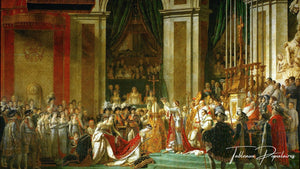
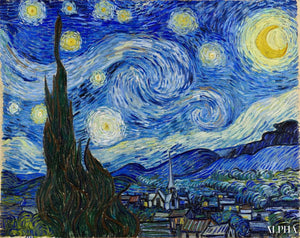
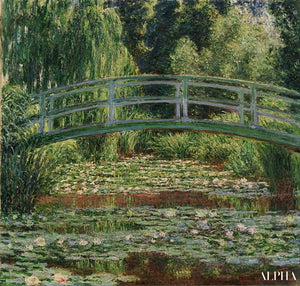
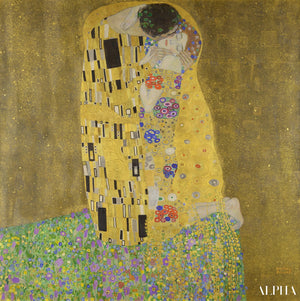
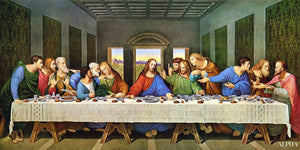
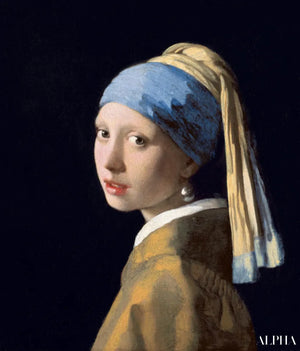
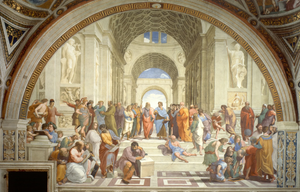
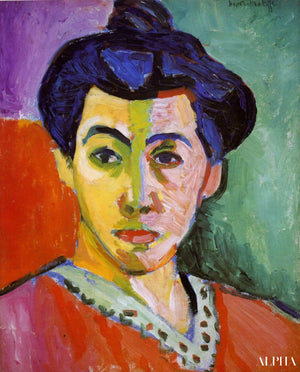
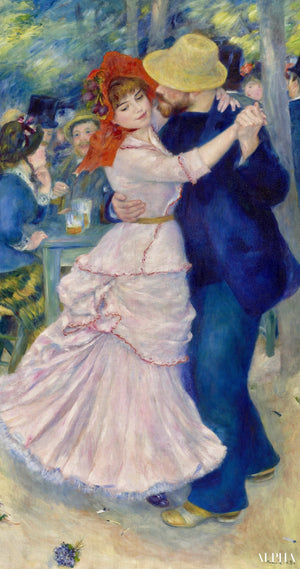


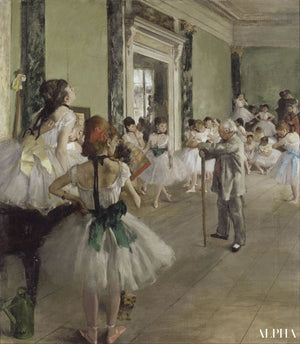
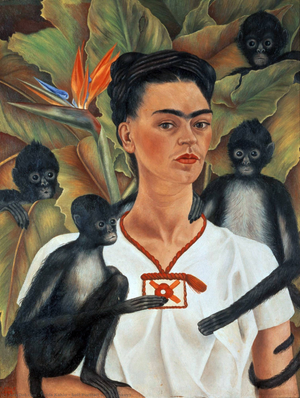
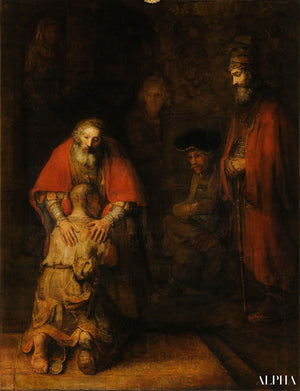

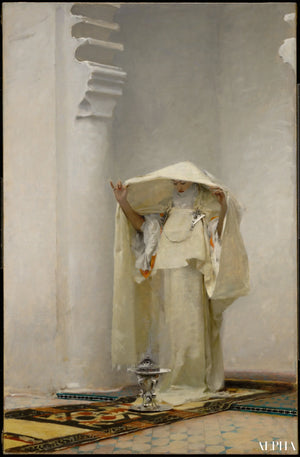
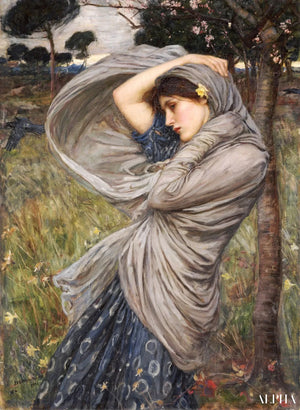

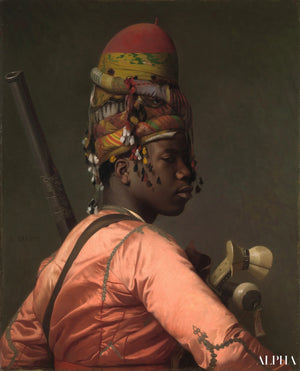





0 comments